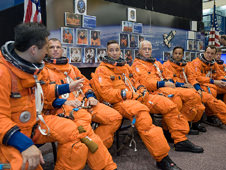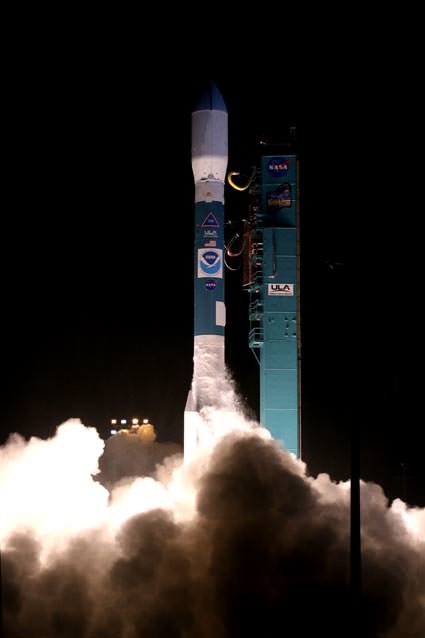[/caption]
Just a few notes on a couple of NASA launches; one was a go, and the other is a no-go for now. The NOAA-N Prime spacecraft got off the ground early Friday morning, lifting off at 2:22 a.m. PST, after working through technical problems that delayed the launch twice. The spacecraft successfully reached its polar orbit, and was renamed NOAA-19. The new satellite will collect data about the Earth’s surface and atmosphere to aid in weather forecasts, climate observations and search and rescue operations. Watch the launch video. On the other side of the coin, the launch of space shuttle Discovery on a space station assembly mission, which was delayed earlier this week from Feb. 12 to Feb. 19 because of concerns about hydrogen flow control valves, has now been slipped to no earlier than Feb. 22 to give engineers more time to complete testing, NASA officials said today.
Each shuttle has three of these valves, one for each main engine. They operate like lawn sprinklers, popping up as required to route hydrogen gas into pipes leading to the external tank to maintain the internal pressure needed to feed propellant to the main engines.
During the launch of Endeavour last November, one of the three flow control valves allowed more hydrogen to pass through than expected, while the other two worked fine. There was no problem with Endeavour’s ascent, but mission managers want to understand the issues better before sending Discovery to the space station to bring up the final solar array on STS-119.

For more information on Discovery, check out NASA’s STS-119 web page, and here’s where you’ll find more info on NOAA-19.


The more you delay the less time there is between the end of the Shuttle and the beginning of Constellation, and the longer the IIS will probably be used.. Probably just an insidious NASA and U.S. Government plot to stop or the winging between these programmes.
Politically smart if you ask me – and it looks like it’s honest.
Now where’s that Mulder and Scully again?